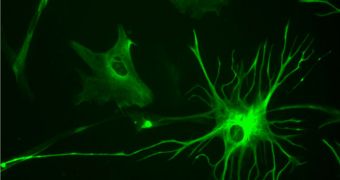A new study by investigators at the Massachusetts Institute of Technology (MIT), in Cambridge, sheds some light on the neural mechanisms involved in allowing us to remember more data about a specific topic, if we are paying close attention to it.
Memories form in the human brain even when our full attention is not directed towards any particular item, event or person. However, memories that are created when we do pay attention tend to be more detailed, and longer-lasting, and experts have long since tried to find out why this happens.
According to the MIT group, neural support cells called astrocytes appear to play an important role in this ability. Scientists found that directing our attention on something makes these cells send more signals to neurons in the visual cortex.
These messages basically inform the latter that they should produce stronger reactions to whatever electrical impulses they get from the retina. Details of the research appear in this week's early online issue of the esteemed journal Proceedings of the National Academy of Sciences (PNAS).
The new sudy therefore brings additional evidences to support the case that astrocytes are not merely limited to playing a support role in the brain, but that they are also heavily involved in processing sensory information.
The senior author of the PNAS paper was the Paul E. and Lilah Newton professor of neuroscience at MIT, Mriganka Sur, whose lab has been studying the role of astrocytes for more than five years.
Since they were first discovered, around 150 years ago, astrocytes have never been researched seriously. To neuroscientists, what they do is still pretty much a mystery, says Sur, who is also the director of the MIT Simons Center for the Social Brain.
“You cannot understand brain disorders without understanding the basic mechanisms of cortical brain function. These cell types – astrocytes, inhibitory neurons – are emerging as major players in brain disorders, in unexpected ways,” the investigator adds.
The investigation was supported by the US National Institutes of Health (NIH) and the Simons Foundation.

 14 DAY TRIAL //
14 DAY TRIAL //